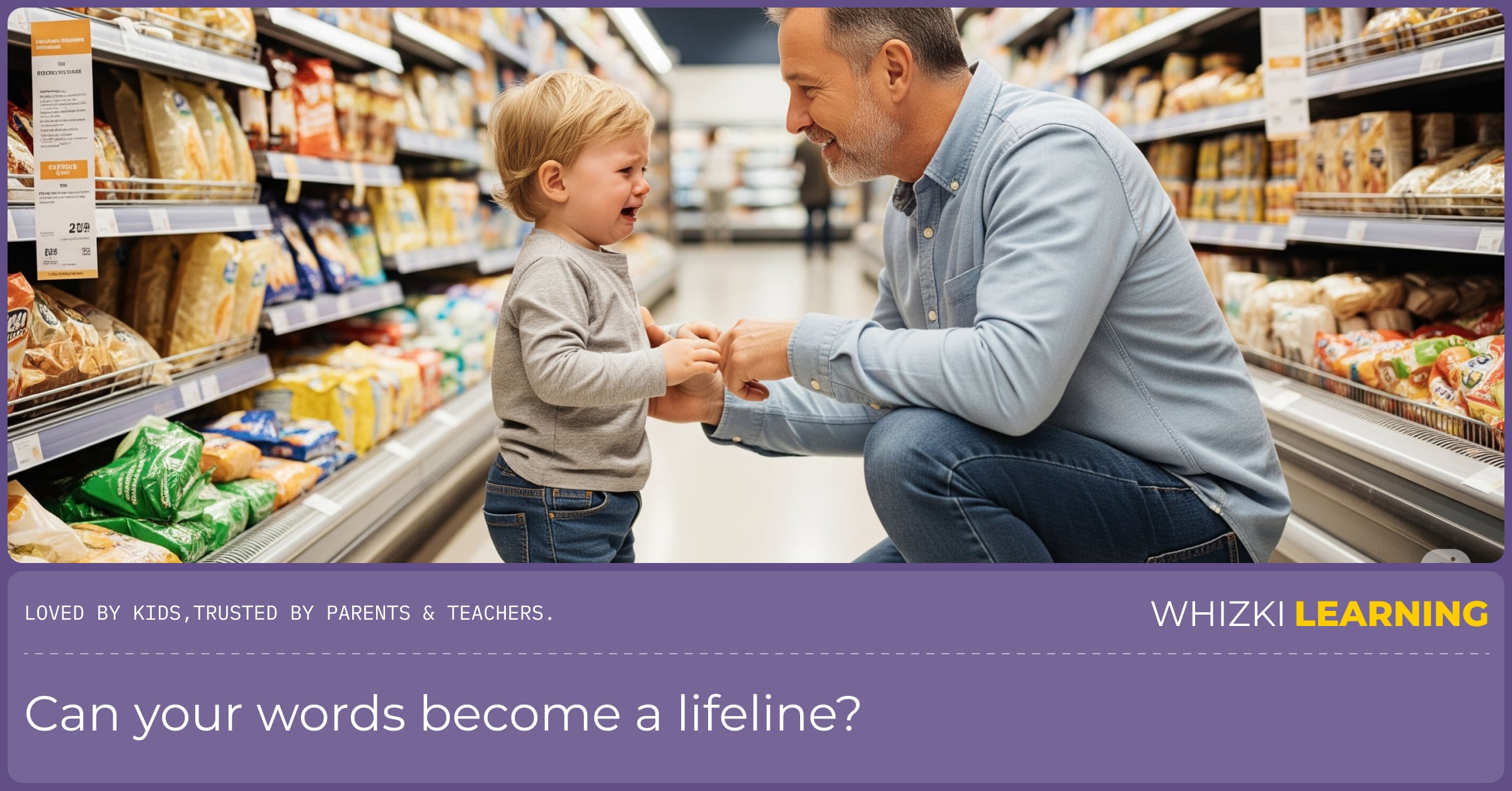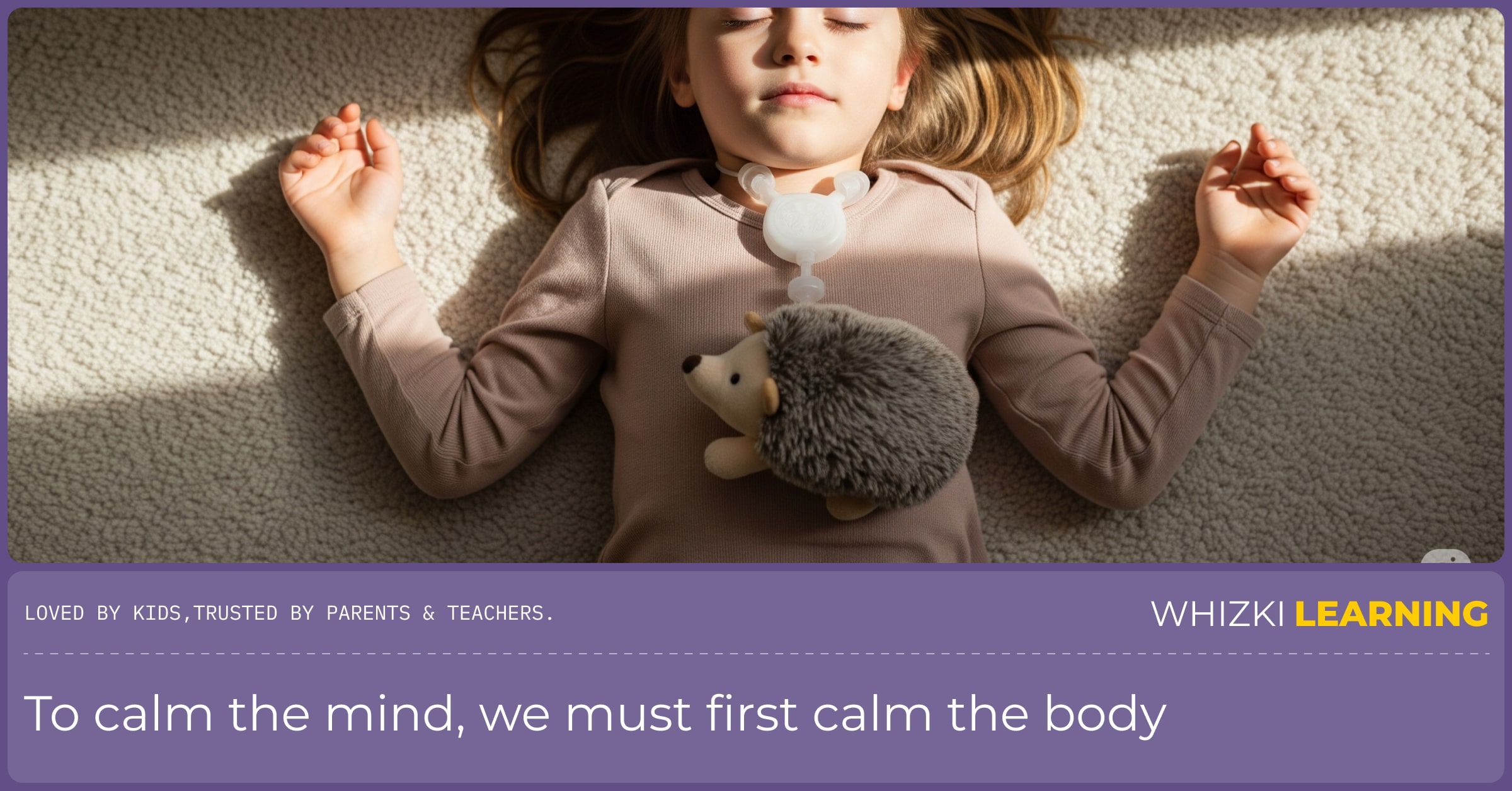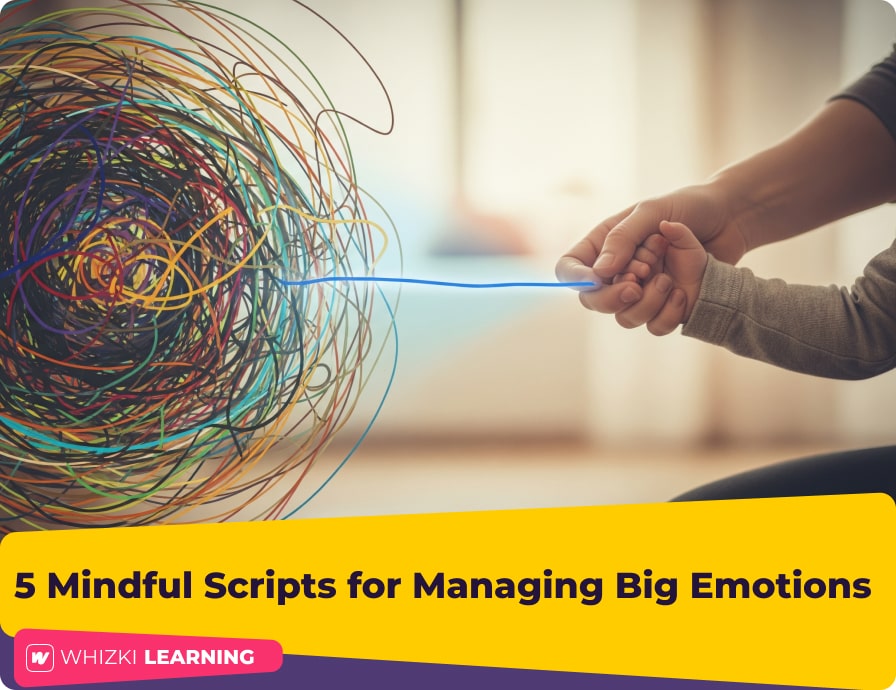The grocery store aisle. It’s fluorescent-lit and crowded. And your toddler, who was perfectly happy 30 seconds ago, has just transformed into a tiny, screaming, writhing tornado of pure emotion. Their face is red, tears are streaming, and their little body is rigid with a feeling so big it has completely taken over. Every eye is on you. You feel a hot flush of embarrassment, frustration, and helplessness. Your only goal is to make it stop.
If this scene feels familiar, take a deep breath with me. You are not alone, and you are not failing. You are the parent of a young child whose developing brain is literally incapable of managing the powerful storms of emotion that sweep through it. A meltdown isn't a sign of bad behavior; it's a signal that your child's nervous system is completely overwhelmed. They're not giving you a hard time; they're having a hard time.
"For a young child, a strong emotion is like a hurricane. They don't need judgment or punishment. They need a lighthouse-a calm, steady, and safe presence to guide them through the storm until they reach the shore again."
- Dr. Lena Rosin, Child Psychologist
This guide is about becoming that lighthouse. We'll explore five practical, mindful scripts-not magic wands, but powerful tools-to help you navigate these storms with compassion and connection. This isn't about stopping the feelings; it's about teaching your child how to feel them without letting the wave capsize their boat.
Before the Script: Your One Job is to Be the Lighthouse
Before you say a single word, your first job is to manage your own nervous system. Your child's brain has something called 'mirror neurons.' It will unconsciously mirror your emotional state. If you are frantic, their franticness will escalate. If you can find even a tiny island of calm inside yourself, their brain will feel it and begin to co-regulate with you. This is the foundation.
Your How-To for Calm:
- Take One Conscious Breath: Before you react, take one slow, deep breath. Feel your feet on the floor. This single action can interrupt your own stress response.
- Lower Your Body: Kneel or sit down so you are at or below your child's eye level. Towering over them is inherently threatening. Coming down to their level says, I am with you in this.
- Soften Your Face: Unclench your jaw. Relax your eyebrows. Try to find a neutral, compassionate expression. Your face is the 'weather report' your child will read.
Only after you've anchored yourself can your words become a lifeline.

The 5 Mindful Scripts: A How-To Guide for Emotional Storms
A step-by-step guide using specific language to help a child navigate big emotions and develop emotional regulation skills.
Script 1: "The Narrator" - Validating the Feeling
During a meltdown, the logical part of your child's brain is offline. They are pure emotion. Your first verbal job is to act like a calm sports commentator, simply narrating what you see. This is a technique called 'Name it to Tame it.' When we give a name to a big, scary feeling, it becomes less overwhelming.
- What to Avoid:
- •
Stop crying!
•You're overreacting.
•There's no reason to be so upset. - Your Script:
- •
I see a big storm of anger inside you right now. Your fists are clenched and your face is red. That is a huge feeling.
•Wow, your body is full of sadness. I see the big tears. It's okay to feel sad.
•I will not let you hit, but I can see you are very, very frustrated. It is so hard when you want something and the answer is no.
Script 2: "The Anchor" - Co-regulating the Body
Big emotions live in the body. To calm the mind, we must first calm the body. Deep breathing is the fastest way to switch the nervous system from fight or flight to rest and digest, but you can't just tell a screaming toddler to take a deep breath. You have to make it a game.
- What to Avoid:
- •
Just calm down!
•Take a breath! - Your Script:
- •
Let's teach your teddy bear how to breathe. Can you put him on your tummy and give him a slow ride up and down on the belly elevator?
•Let's pretend to blow out all the candles on a giant birthday cake. Let's take a big breath in... and whoosh!
•Can you show me how a dragon breathes? Let's breathe in fire through our nose, and let it out with a big sigh.

Script 3: "The Weather Reporter" - Acknowledging Transience
To a child, a big feeling can feel like it will last forever, which is terrifying. Your role is to be a calm weather reporter, reminding them that all weather, even a hurricane, eventually passes. This teaches them that they are not their emotion; they are the sky in which the emotion is happening.
- Your Script:
- •
This is a big feeling, and it will pass. I am right here with you until it does.
•Feelings are like waves in the ocean. This is a very big, splashy wave, but it will wash back to the sea. We can ride it together.
Script 4: "The Safe Harbor" - Offering Physical Boundaries
Sometimes emotions are so big they need a physical outlet. Your job is to make that outlet safe. This validates their physical feelings while holding a firm boundary against hurting themselves or others.
- Your Script:
- •
Your body has so much angry energy right now. It is not okay to hit me, but it is okay to hit this pillow. Do you want to punch the couch cushions as hard as you can?
•It looks like your body needs a big, tight squeeze to feel safe. Would you like a 'squeeze hug' from me, or would you like to roll up tight in this blanket like a burrito?
Script 5: "The Detective" - Connecting After the Storm
The real teaching doesn't happen during the hurricane; it happens after the sky is clear. Once your child is calm, take a few minutes to reconnect and problem-solve without blame. This is how you build emotional intelligence.
- Your Script:
- •
That was a tough moment. Thank you for letting me help you through it. Let's be detectives for a minute. What do you think happened right before that big feeling started?
•You were so disappointed when we had to leave the park. I get it. It's hard to stop doing something fun. Next time, I will try to give you a 5-minute warning before we go. What do you think?
The Calm After the Storm: How Workbooks Can Help
After a meltdown, a child's brain is often tired and disorganized. This is a crucial time for a quiet, re-centering activity. A simple, structured task can be incredibly grounding. This is where a hands-on learning workbook can be a wonderful tool. The clear, predictable nature of a tracing page or a simple matching game in one of our preschool workbooks helps a child's brain find order again. It's a quiet, screen-free way to reconnect with your child and help them feel competent and successful after a moment of feeling out of control.
You Are The Lighthouse
Remember, these scripts are not magic. They will not stop every tantrum. But they are a practice. Every time you respond with calm connection instead of frustrated reaction, you are weaving a neural pathway of emotional resilience in your child's brain. You are teaching them that all their feelings are acceptable, that they can survive the biggest storms, and that you will always be their safe harbor. And that is one of the most profound gifts a parent can give.






